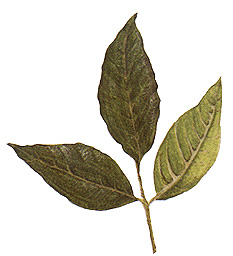hemlock???
nasah86, not to put anyone down but I'm sorry you've been thrown off the trail with some of the suggestions in here but great job on figuring that out on your own! As for what kind of tree you have there, I have no idea because the photos would only partially load. My advice to you is to go to the library or bookstore and buy yourself a tree identification book. You don't need the huge encylopedia-sized set with all the trees around the globe. I personally use TREES by Allen J. Coombes, a smithsonian handbook which is detail oriented but in a very organized and easy to read way. It's under 1" thick with 300 pages and a waterproof cover.
Once you have your tree id book you will follow a key in the beginning which, by a process of elimination will have your tree identified in minutes and sometimes seconds. The first question you will be asked is if your tree is a conifer or a broadleaf. Yours is a broadleaf which makes me wonder why people are suggesting you have a hemlock which is a hands-down conifer...we work in alot of those here in the PNW. The next questions will ask if the leaves are opposite or alternate from each other on the stem, simple or compound. This will bring you to clear, colored photos of leaves to compare to yours! From there, you have your books detailed description of the suggested tree with many reference points, photos and remarks to compare to your tree. Maybe the best $20 I ever spent because I have impressed many a homeowner when I quickly broke down to them exactly what kind of tree they had, it's likes and dislikes, growth habits, etc.
As for the darker wood in the center there's a very simple explanation for that. I'm sorry your tree biology questions went unanswered. The darker area inside your stem is called heartwood. The lighter rings around it are called sapwood. Heartwood is no longer 'alive' in that it no longer conducts water/nutrients. It does help support the tree, however. Sapwood is still conducting, I think about 8 or 10 outer rings on a broadleaf and only 3 or 4 or so on a conifer, generally.
The reddish 'bark' you were running into was probably the cambium layer just under the bark which is the living part of the tree containing phloem and xylem; phloem carrying nutrients down mostly and xylem carrying water up mostly...anyway google this stuff or find an intro to arboriculture course in your area cause it's pretty interesting.
Hope this helps!






























































